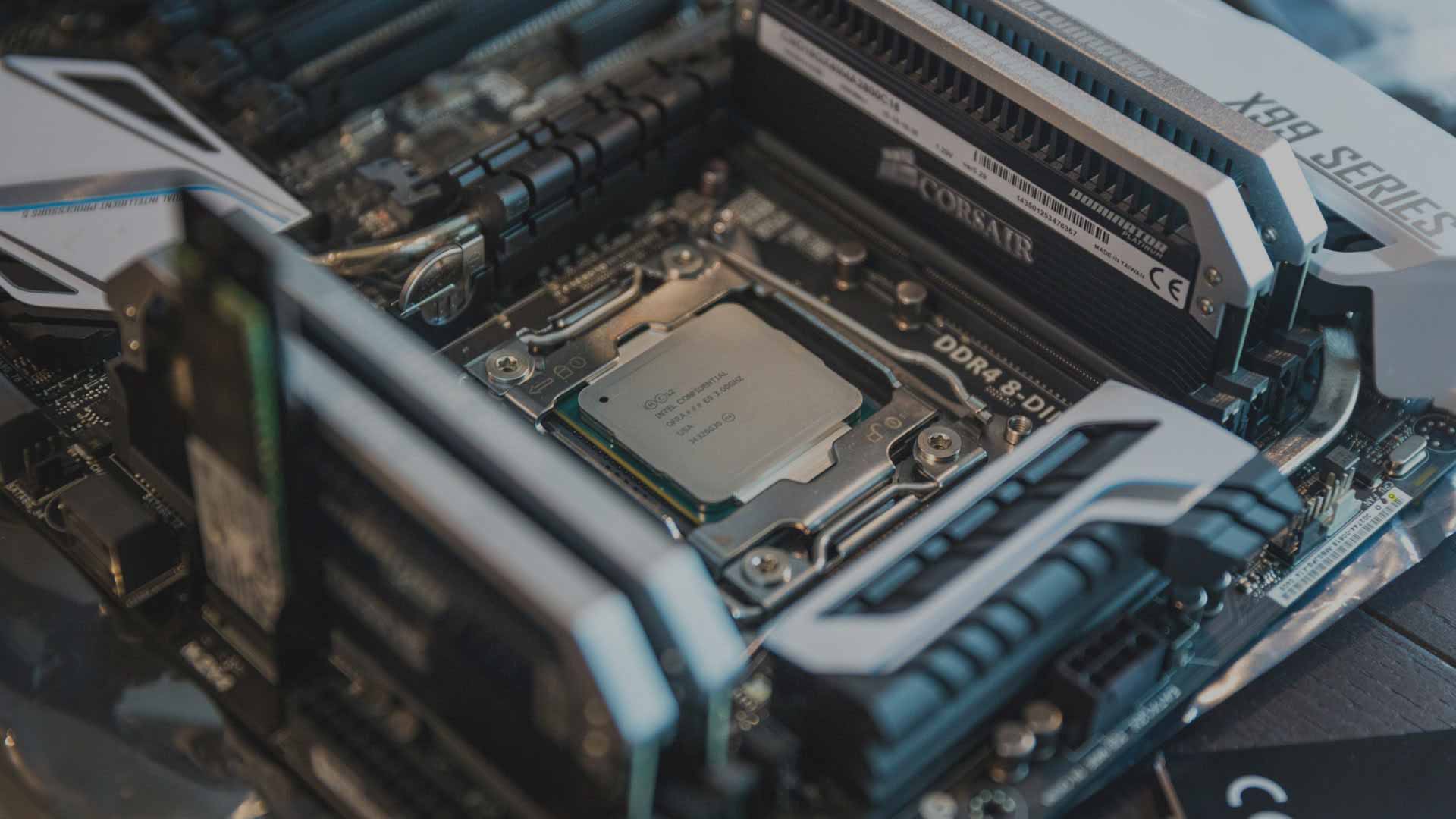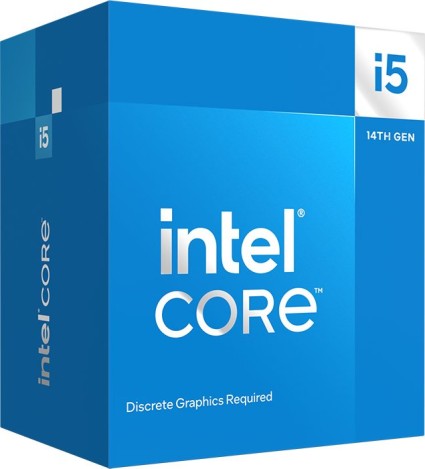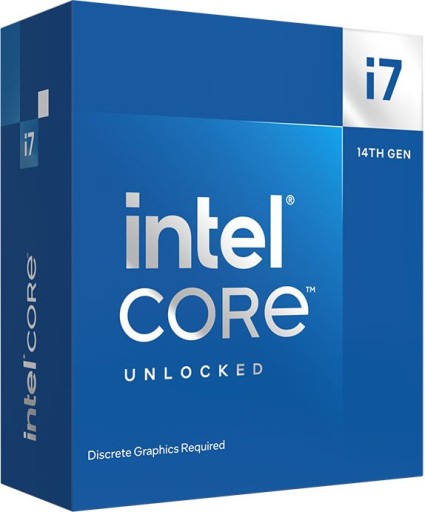
Intel Core i5-14400F vs. Intel Core i7-14700KF
In diesem Vergleich von Intel Core i5-14400F versus Intel Core i7-14700KF vergleichen wir die technischen Daten der beiden GPUs. Welche Grafikkarte ist schneller? Hier gibt es FPS & Benchmarks in Gaming und Anwendungen. Außerdem Daten zu Verbrauch, Effizienz (FPS pro Watt) und Preis-Leistung (FPS pro Euro).

Allgemeine Informationen
| Günstigster Preis |
|
|
| Serie | Intel Core i-14000 | Intel Core i-14000 |
| Chip-Architektur | Golden Cove oder Raptor Cove (P-Core) + Gracemont (E-Core) | Raptor Cove (P-Core) + Gracemont (E-Core) |
| Codename | Raptor Lake-S | Raptor Lake-S |
| Produktname | Intel Core i5-14400F | Intel Core i7-14700KF |
Spezifikationen
Die Anzahl der Rechenkerne, die maximale Taktrate und die Größe des Cache können sich auf die Leistung in Spielen und Anwendungen auswirken. Mit 10 Kernen bietet der Intel Core i5-14400F deutlich weniger Kerne als der Intel Core i7-14700KF mit 20 Rechenkernen. Der maximale Takt liegt beim Intel Core i5-14400F mit 4.70 GHz niedriger als beim Intel Core i7-14700KF mit 5.60 GHz. Der Cache ist beim Intel Core i5-14400F mit 9.5 MB L2-Cache + 20 MB L3-Cache zu 28 MB L2-Cache + 33 MB L3-Cache deutlich kleiner als beim Intel Core i7-14700KF.
| Kerne (Gesamt) | 10 | 20 |
| Anzahl P-Cores | 6C | 8C |
| Anzahl E-Cores | 4c | 12c |
| Basis-Takt | 2.50 GHz | 3.40 GHz |
| Takt P-Cores | 2.50 GHz | 3.40 GHz |
| Takt E-Cores | 1.80 GHz | 2.50 GHz |
| Turbo-Takt | 4.70 GHz | 5.60 (Turbo Boost Max 3.0) GHz |
| Turbo P-Cores | 4.70 GHz | 5.60 (Turbo Boost Max 3.0) GHz |
| Turbo E-Cores | 3.50 GHz | 4.30 GHz |
| Gesamter L2-Cache | 9.5 MB | 28 MB |
| Gesamter L3-Cache | 20 MB | 33 MB |
| Fertigung | Intel 7 | Intel 7 |
| Rechenleistung | - | - |
| Leistungsaufnahme (TDP) | 65W (Processor Base Power) 148W (Maximum Turbo Power) |
125W (Processor Base Power) 253W (Maximum Turbo Power) |
Mainboard-Kompatibilität
Sowohl der Intel Core i5-14400F als auch der Intel Core i7-14700KF setzen auf den Sockel Intel 1700.
| Sockel | Intel 1700 | Intel 1700 |
| Chipsatz-Eignung | B660, B760, H610, H610E, H670, H770, Q670, Q670E, R680E, W680, Z690, Z790 | B660, B760, H610, H610E, H670, H770, Q670, Q670E, R680E, W680, Z690, Z790 |
| PCIe-3.0-Lanes | - | - |
| PCIe-4.0-Lanes | 4x | 4x |
| PCIe-5.0-Lanes | 16x | 16x |
RAM-Kompatibilität
Während Sie beim Intel Core i5-14400F bis zu 192 GB vom Typ DDR4/DDR5 im Dual Channel verbauen können, unterstützt der Intel Core i7-14700KF bis zu 192 GB DDR4/DDR5 Arbeitsspeicher.
| Speicher-Controller | DDR4/DDR5 | DDR4/DDR5 |
| Anzahl Speicherkanäle | Dual Channel | Dual Channel |
| max. Speichermenge | 192 GB | 192 GB |
| ECC-Unterstützung | - | - |
Grafik
| iGPU | - | - |
| iGPU-Modell | - | - |
| iGPU-Takt | - | - |
| iGPU-Einheiten | - | - |
| iGPU-Rechenleistung | - | - |
| iGPU-Architektur | - | - |
| iGPU-Interface | - | - |
| iGPU-Funktionen | - | - |
Sonstiges
| Freier Multiplikator | - | ✓ |
| Stepping | B0/C0, Spec Code: SRN47/SRN3R | B0, Spec Code: SRN3Y |
| Heatspreader-Kontaktmittel | - | Metall/verlötet |
| Temparatur max. | 100°C (Tjunction) | 100°C (Tjunction) |
| Fernwartung | - | - |
| Einführung | 2024/Q1 (8.1.2024) | 2023/Q4 (16.10.2023) |
| Herstellergarantie | 5 Jahre bei Intel® Boxed-Prozessoren durch erweiterte Garantieunterstützung (Info EN) | 5 Jahre bei Intel® Boxed-Prozessoren durch erweiterte Garantieunterstützung (Info EN) |
CPU-Funktionen
| AES-NI | ✓ | ✓ |
| AVX | ✓ | ✓ |
| AVX2 | ✓ | ✓ |
| Boot Guard | ✓ | ✓ |
| CET | ✓ | ✓ |
| DL Boost | ✓ | ✓ |
| EIST | ✓ | ✓ |
| GNA 3.0 | ✓ | ✓ |
| Idle States | ✓ | ✓ |
| Instruction Set | ✓ | ✓ |
| ISM | ✓ | ✓ |
| MBEC | ✓ | ✓ |
| Optane Memory Support | - | - |
| OS Guard | ✓ | ✓ |
| Secure Key | ✓ | ✓ |
| Speed Shift | ✓ | ✓ |
| SSE4.1 | ✓ | ✓ |
| SSE4.2 | ✓ | ✓ |
| Thermal Monitoring | ✓ | ✓ |
| VMD | ✓ | ✓ |
| VT-d | ✓ | ✓ |
| VT-x | ✓ | ✓ |
| VT-x EPT | ✓ | ✓ |
| XD Bit | ✓ | ✓ |
Spiele

- Intel Core i5-14400FAVG100.00 %1%100.00 %
- Intel Core i7-14700KFAVG145.13 %1%143.06 %

- Intel Core i7-14700KFAVG290.8 FPS1%208.7 FPS
- Intel Core i5-14400FAVG162.5 FPS1%114 FPS

- Intel Core i7-14700KFAVG683 FPS1%326.3 FPS
- Intel Core i5-14400FAVG430.5 FPS1%253.3 FPS

- Intel Core i7-14700KFAVG159.3 FPS1%114.3 FPS
- Intel Core i5-14400FAVG123.3 FPS1%82.8 FPS

- Intel Core i7-14700KFAVG217.2 FPS1%162.9 FPS
- Intel Core i5-14400FAVG176.2 FPS1%122.6 FPS

- Intel Core i7-14700KFAVG178.1 FPS1%124.9 FPS
- Intel Core i5-14400FAVG123.5 FPS1%90.7 FPS

- Intel Core i7-14700KFAVG276.6 FPS1%176.7 FPS
- Intel Core i5-14400FAVG189.9 FPS1%121.4 FPS

- Intel Core i7-14700KFAVG98.8 FPS1%73.1 FPS
- Intel Core i5-14400FAVG71.4 FPS1%52.6 FPS

- Intel Core i7-14700KFAVG302.6 FPS1%171.8 FPS
- Intel Core i5-14400FAVG212 FPS1%123.2 FPS

- Intel Core i5-14400FAVG1.40 FPSIntel Core i7-14700KFAVG0.86 FPS

- Intel Core i5-14400FAVG2.25 FPSIntel Core i7-14700KFAVG2.07 FPS
Produktivität
Produktivität

- Intel Core i5-14400FAVG100.00 %Intel Core i7-14700KFAVG158.78 %

- Intel Core i5-14400FPKT83090 PunkteIntel Core i7-14700KFPKT173674 Punkte

- Intel Core i5-14400FPKT1233 PunkteIntel Core i7-14700KFPKT1499 Punkte

- Intel Core i5-14400FPKT721 PunkteIntel Core i7-14700KFPKT1032 Punkte

- Intel Core i5-14400FSEK398 SekundenIntel Core i7-14700KFSEK177 Sekunden

- Intel Core i5-14400FPKT868 PunkteIntel Core i7-14700KFPKT1830 Punkte

- Intel Core i5-14400FPKT2407 PunkteIntel Core i7-14700KFPKT3313 Punkte

- Intel Core i5-14400FPKT12680 PunkteIntel Core i7-14700KFPKT19836 Punkte

- Intel Core i5-14400FSEK90 SekundenIntel Core i7-14700KFSEK51 Sekunden




